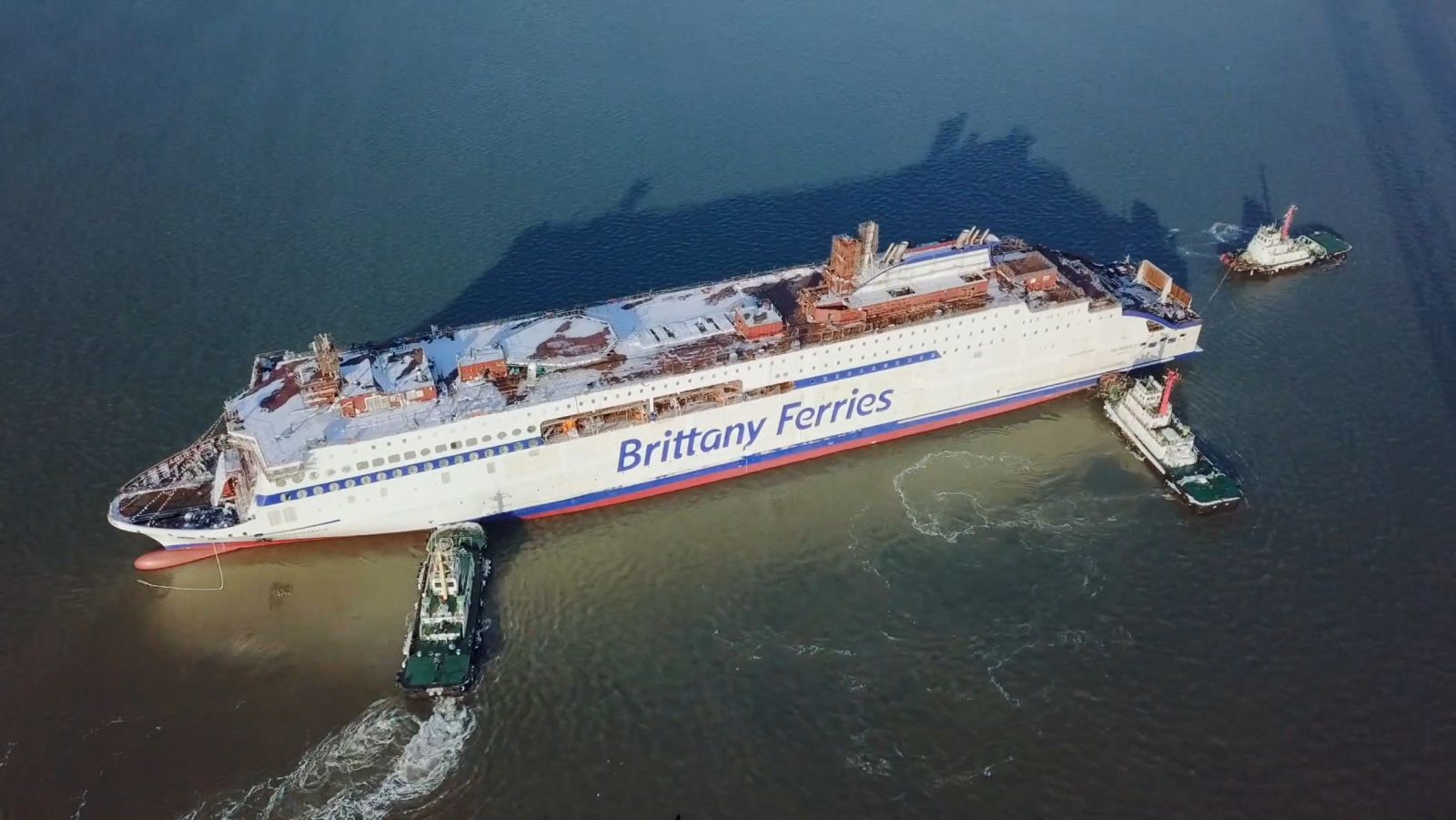Brittany Ferries: Brexit and Covid cost us ‘several hundred million euros’ already

The combined effects of Brexit and the Covid-19 pandemic have cost Brittany Ferries ‘several hundred million euros’ according to its president Jean-Marc Roué.
In a statement to mark the launch of Salamanca, the second of the company’s three new ferries to join its fleet, Roué said despite "these crises" he was committed to improving its fleet, reducing the company’s carbon footprint and developing the regions it serves.
"In spite of Brexit and Covid which have cost our company several hundred million euros already, I am resolved to remain on our path towards eco-responsibility and energy transition."
"It is a formal commitment I’ve made: we will continue, despite these crises, to reduce our carbon footprint, to keep on improving our fleet and to contribute to the development of the regions we serve. Salamanca is a good illustration of this. By renewing our fleet today, we are ensuring a return to growth tomorrow and Brittany Ferries and our partners remain confident in the future."
Salamanca will join sister-ship Galicia when she enters service in the spring of 2022 and will be powered by a cleaner Liquefied Natural Gas (LNG). The launch ceremony took place on 6 January 2021 at the CMJL shipyard in Weihai, China, where she is under construction.
Fleet renewal was one of the pillars of Brittany Ferries’ five-year recovery plan with the investment in new ships made before the pandemic began.
NCL said a trio of ‘cleaner, more efficient and comfortable vessels will help secure the company’s future ensuring the continuity of passenger and freight services’.
Galicia entered service in December 2020. Salamanca will join her in 2022 with Santoña following in 2023. Both Salamanca and Santoña will be powered by LNG and will serve the company’s long-distance routes connecting the UK with Spain.
Each E-Flexer vessel promises a significant reduction in air quality and greenhouse gas emissions. They are also smoother, quieter and benefit from less vibration with better sea handling, to the benefit of passengers.
Like her sister Galicia, Salamanca will weigh-in at over 42,000 gross tonnes, meaning she will be one of the largest ships ever to serve the company, and at 215 metres long she will be joint-longest. She will carry 1,015 passengers, with over 2.7km of lane-space to house passenger and freight vehicles.
By Louise Longman, Contributing Editor (UK)
 United Kingdom
United Kingdom United States
United States Asia Pacific
Asia Pacific























BA suspending all Heathrow to Abu Dhabi flights
Turkish Airlines flight in emergency landing after pilot dies
Unexpected wave rocks cruise ship
NCL cancels dozens of sailings on three ships
Woman dies after going overboard in English Channel